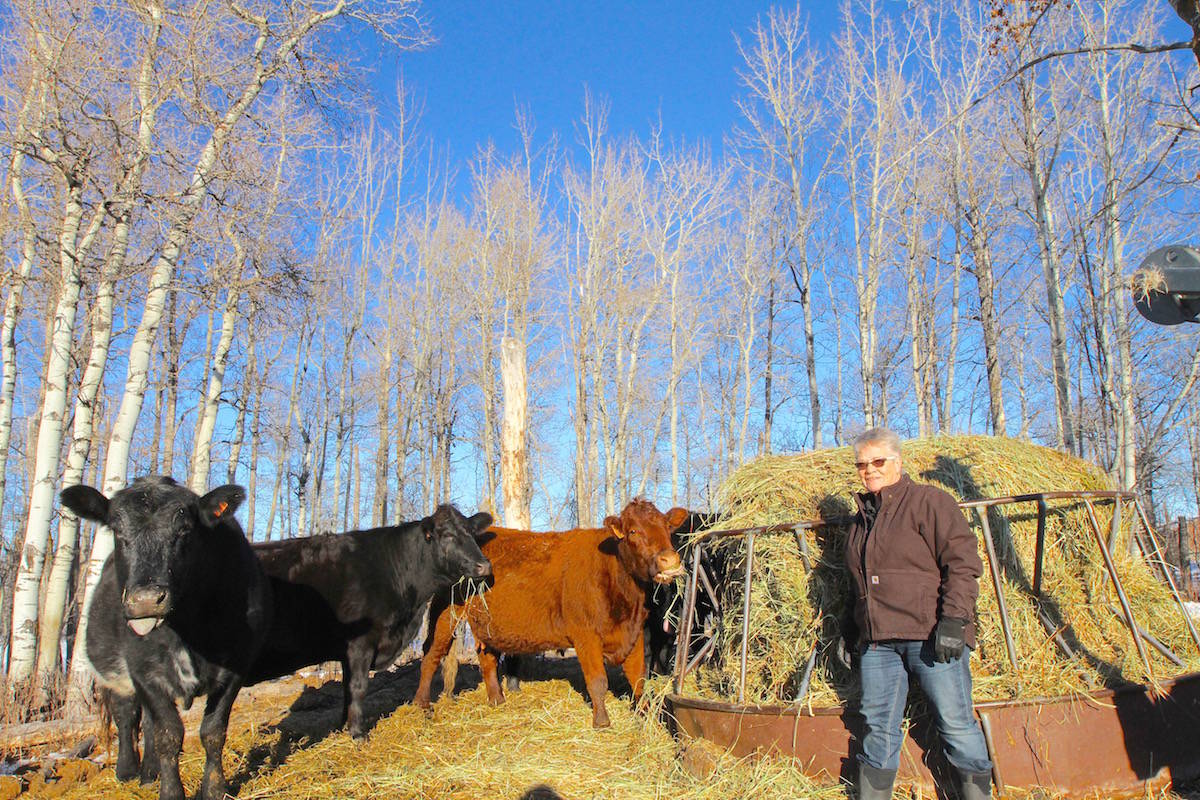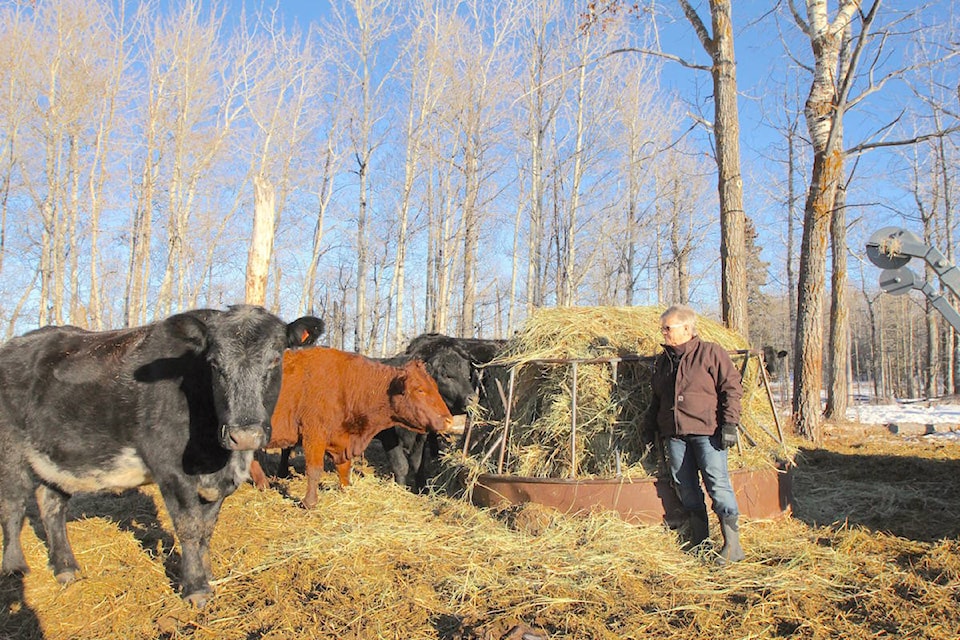There are bad years for central Alberta farmers — and then there’s 2018.
This year is being described as disastrous by many producers who have seen crop revenues plunge and hay prices soar, forcing many ranchers to sell off cattle they can’t afford to feed over the winter.
Innisfail-area farmer Penny Waddell sold two-thirds of her “retirement herd” after she ran out of pasture grasses due to severe drought conditions in mid-August — a good two months earlier than usual.
While selling her cattle wasn’t the ideal solution, it seemed like the best bet, says Waddell. So many ranchers are auctioning off their cows this fall, that the price has dropped to $900 to $1,700 per head from a high of $2,500 to $3,000 a couple years ago.
“Maybe I could have kept (the cattle) a little longer,” she adds, but with scarce hay costing up to $150 a bale, compared to a more usual $75 to $100, Waddell couldn’t gamble her retirement savings on buying winter feed supplements.
She says she doesn’t know what next year could bring.
The former social worker, who got into farming a quarter-century ago, remembers conditions were so dry 10 or 12 years ago, that farmers were cutting hay growing in the ditches. But this year, “it’s the worst I’ve seen.”
The County of Stettler was among several rural municipalities in the province that were forced to call a state of agricultural disaster in October when it became clear that both crop and cattle farmers were going to suffer huge losses due to weather that provided the opposite conditions to what was needed.
“Everything happened at the wrong time,” explains Quinton Beaumont, agricultural services director for the County of Stettler.
Instead of a wetter spring, local farmers experienced a long-lasting drought that did not let up all summer. Then, just as harvest time came around, dumps of snow fell throughout September.
As a result, grain and hay yields were low, and the crops that survived were well below average in quality.
“What we’re having is a quality yield issue,” says Cody McIntosh, agriculture services manager for Red Deer County.
According to third-quarter results released by Alberta Agriculture, Alberta saw the largest decrease in agricultural revenues of any Canadian province. Farm cash receipts decreased by 8.7 per cent to $3.03 billion in the third quarter of 2018, as compared to the same quarter last year.
The national average for the third quarter was a decrease of 0.5 per cent. Alberta crop revenues and direct payments declined by 25.5 per cent and 12.2 per cent respectively, while livestock receipts increased 7.1 per cent to $1.72 billion.
With hay prices being so high, McIntosh and Beaumont know of some farmers who drove to Manitoba to buy hay and others who shipped their cattle to northern Alberta or out of province for grazing — but that’s also a high cost.
With two lower-than-average years, McIntosh says Revenue Canada is marking where agricultural conditions are poorest and allowing some farmers to access the emergency tax deferral program for their capital gains. Beaumont said he is lobbying to get Stettler area farmers on the list.
Other farmers were fortunate to have purchased crop insurance.
While drought often comes in several-year cycles, Beaumont says everybody is hoping for a better 2019.

